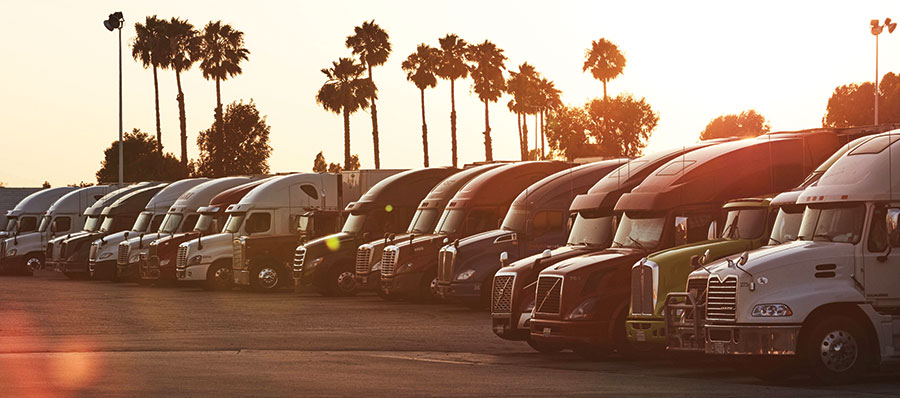Hatch Chile Co. secures truckload capacity…Quickly
Specialty packaged food company leverages load matching app to meet 100% volume growth during the pandemic—and saves thousands in the process.

This was especially true for Hatch Chile Co., a Coppell, Texas-based packaged food company that sells southwestern U.S.-based products and is well known for its Hatch Brand Diced Green Chilies packaged in a four-ounce can.
At the onset of the pandemic in March and April, Hatch’s volumes hit record levels, with demand for certain products up more than 100%, a reality driven by consumers cooking more meals at home. This sudden shift put the company in a tough position, and the logistics team knew they needed to make some changes to uphold their on-time customer delivery promise.
First, Hatch needed to secure additional truck capacity—and quickly—to bring in more products from its manufacturing plants and suppliers to its warehouses, and then ship out to meet higher demands and greater volumes to its customers in the retail and
grocery channels.
According to Hatch Chile Co. president David Gregory, this led the company to develop a relationship with San Francisco-based Uber Freight, a subsidiary of the ubiquitous ride-sharing service Uber, whose proprietary app matches trucking companies with loads.
Gregory explains that, in the past, when the logistics team worked with traditional freight brokers, the communications process between shipper and broker was primarily e-mail- and phone-based. “It would be along the lines of us asking for a quote for a load, and the broker would send us a spreadsheet back with a listing of their rates for various lanes,” he says. “But it was always a manual back and forth process, particularly for requesting quotes, in the form of a phone call or an e-mail.”
Realize that process had become time-consuming and outdated, Hatch looked into Uber Freight’s Shipper Platform, an app that Uber describes as “a simple intuitive dashboard geared towards helping small businesses manage logistics tasks via a singular interface.” These tasks include: finding reliable capacity, budgeting for shipping costs, tracking, and ensuring goods are delivered on-time.

Stark contrast to phone tag
According to Gregory, things quickly changed for the better. “One of the major benefits Uber offered was its online portal,” he says. “Instead of having to contact someone through e-mail or a phone call, we could simply say: ‘We need a truck to go from point A to point B’ on our laptop and get a quote right away. If the quote was reasonable, we could go ahead and book the truck and not have to deal with all of the back and forth.”
This represented a stark contrast to the intermittent rounds of e-mails and phone tag, says Gregory, who adds that the key differentiator of the Uber platform was that it provided relatively fast and almost instantaneous quotes—coupled with the ability to book a load with minimal manual interference.
As for what led Hatch to give Uber Freight a shot, Gregory explains that it came about as a byproduct of him using Uber’s ridesharing service, adding that he believes the technological capabilities outpace the competition in terms of robustness and ease of use.
According to Gregory, another major attraction within the Shipper Platform was the Uber Freight relief load initiative, a program it introduced in March specifically to help small shippers better navigate the capacity issues brought on by the pandemic.
As part of the initiative, all relief loads booked via the Uber platform are hauled with zero-profit pricing. Uber contends that, by lowering the cost of transportation, it aims to support small shippers as they navigate the challenging economic times, as well as help ensure that critical goods can get where they need to be reliably and on time.
Gregory described the relief load initiative in one word: “fantastic.” What’s more, he says that it put the pricing into much better perspective, especially when it comes to the financial savings that Hatch realized during the course of a couple challenging months.
“We would think, ‘maybe this quote is a little bit high,’ however, if the platform can get it booked cheaper, they’re going to refund the difference to us, which took the risk out of it even if we thought the quote seemed a little bit off,” says Gregory. “And sure enough, at the end of the day, it paid off.”
Over March and April, Gregory notes that Uber would indicate if it was able to book a truck as it typically does, for example, from Dallas to Atlanta for $1,800. However, if they could procure a lower rate, say for $1,600, it then qualifies as a relief load, with Uber moving that load as a special, low-profit or no-profit deal. In this case, Uber Freight refunds the difference between what was actually booked, at $1,800, and refunds the $200 difference to the shipper.
“When you take all of those kind of deltas across the 50 or 60 different loads we had, it resulted into at least $6,000 in cost savings in relatively short period of time,” says Gregory.
“This process marked a wholesale change compared to a more typical process, in which the agreed-upon rate would have been the actual rate, with no relief.”
According to Gregory, the $6,000 savings represented a 5% to 10% cost savings over what Hatch had originally booked. “Had we been with larger brokers,” he adds, “we never would have realized that kind of savings, as the rate would be the rate.”
Armstrong & Associates’ report focuses on new digital freight options
A recently released report by Milwaukee-based supply chain consultancy Armstrong & Associates takes a deep dive into the many facets of freight brokerage operations from various perspectives.
The report, titled “Digitization: The Convergence of Modern Freight Brokerage, Digital Freight Matching, and Automation in Domestic Transportation Management,” examines the digital transformation steps for becoming a digital freight broker, focusing on systems to augment transportation management systems (TMS), while also addressing what the firm calls the “rapid technological changes” within the domestic transportation management (DTM) third-party logistics (3PL) segment over the last five years.
A key focus of the report is on how a TMS to run DTM operations is viewed as one of the necessary steps to develop a “truly digital freight brokerage operation.” This shift is occurring on a daily basis, according to the report, with upstart digital freight brokers (DFB) like Convoy, Uber Freight, and Transfix taking steps to leverage their respective digital freight matching (DFM) technology as a competitive advantage in a crowded and competitive market of established players like C.H. Robinson, Coyote and Hub Group.
Armstrong & Associates’ president Evan Armstrong said in an interview that many of the key digitization themes in the report represent areas that his firm has had to define.
“Over the last five years, in DTM and freight brokerage, there has been so much more technology coming on to the market that it is really not about TMS anymore,” says Armstrong. “TMS is really ‘table stakes’ now. It’s really what else you can do from a systems standpoint to really digitalize your operations, reduce the amount of manual tasks, and automate processes—that is where our focus is for this report.”
What’s more, there’s been a fair amount of what Armstrong calls “intelligent capacity systems” developed using multiple data points for things like lane history information out of a TMS, carrier information from multiple sources relating to carrier capacity, weather and other different data points.
When looking at the major digital freight brokerage players, one key theme that they have, says Armstrong, is that they have all built systems to do digital freight matching with some automation on top of it for algorithms to do pricing—what he calls “visibility management systems.”
“New digital freight brokers have come on the market with proprietary technology and a lot of capabilities,” adds Armstrong. “And you have modern domestic transportation managers, or freight brokers, that all have a TMS. Most of them have pretty efficient operations from an operational model standpoint, but they don’t have automated pricing. They are not using AI to match loads to carriers and are not as digitalized as some of the new DFBs.”.

Article Topics
Motor Freight News & Resources
LM Podcast Series: Assessing the freight transportation and logistics markets with Tom Nightingale, AFS Logistics XPO opens up three new services acquired through auction of Yellow’s properties and assets FTR’s Trucking Conditions Index weakens, due to fuel price gains TD Cowen/AFS Freight presents mixed readings for parcel, LTL, and truckload revenues and rates Preliminary March North America Class 8 net orders see declines National diesel average heads down for first time in three weeks, reports EIA Trucking industry balks at new Biden administration rule on electric trucks: ‘Entirely unachievable’ More Motor FreightLatest in Logistics
LM Podcast Series: Assessing the freight transportation and logistics markets with Tom Nightingale, AFS Logistics Investor expectations continue to influence supply chain decision-making The Next Big Steps in Supply Chain Digitalization Warehouse/DC Automation & Technology: Time to gain a competitive advantage The Ultimate WMS Checklist: Find the Perfect Fit Under-21 driver pilot program a bust with fleets as FMCSA seeks changes Diesel back over $4 a gallon; Mideast tensions, other worries cited More LogisticsAbout the Author
Subscribe to Logistics Management Magazine

Find out what the world's most innovative companies are doing to improve productivity in their plants and distribution centers.
Start your FREE subscription today.
April 2023 Logistics Management

Latest Resources
















